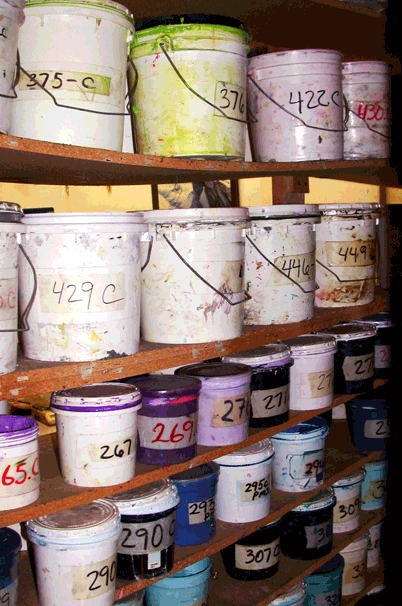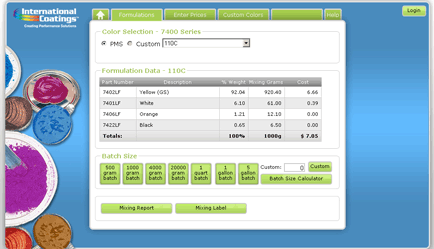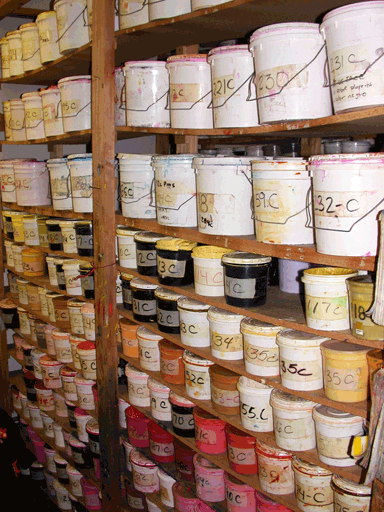Ink Kitchens And Color Libraries
June 08, 2010

Every print shop has a place to store ink buckets, but for those printers who are mixing PMS colors or their own custom colors, a dedicated color-mixing area should be created. In fact, the color-mixing area should be a dedicated section of an ink room. Here is Kieth Stevens, our Western Regional Sales Manager with more insight on this topic:
"Common things I see even with some of the most professional shops I work with are their prepared ink libraries. For the most efficiency, shelves should be covered with pint or quart containers of finished Pantone® or custom colors, rather than gallons or pails.
Let me explain: The way I would have my ink kitchen organized is to mix everything in pints and quarts and very rarely in gallon containers. Extremely rare would be a pail (5 gallon container) of any particular color. I would also try and keep away from custom colors as much as possible.
When mixing a color for a sample print, only mix a pint (500 grams), attach a label from the mixing software that includes the color formula and the Pantone® value and when finished, put the container on the shelf for later use. A tip here: Store the containers by Pantone® number so it can easily be found later. Slowly, a color library develops and soon, a sample print and/or a production run can be set up without ever having to mix a color.

Once a production run is planned out, use the color mixing formulator/calculator software (such as International Coatings’ Ultramix® color formulation tool) to calculate how much ink will be needed to finish the whole production. (See our blog from May 26th 2010 regarding Color Matching Software for more detailed info).
When calculated properly, little or no further amount of ink may be needed to finish the job. Sounds good doesn’t it?
One last housekeeping tip: Be sure to dispose of waste ink properly. In fact, if left-over ink is properly sorted, some of it can be re-worked and re-used. For example, in one container, collect ink that contains little or no white pigments, while in another container collect ink that has white pigments. Black pigment can be added to the first container to create a black ink. Similarly, the second container may be mixed into a pastel color and be re-used.

I have included some photos of some pretty impressive “library shelves” as examples. Remember to keep your ink kitchen clean and orderly. Get to know the many additives that are available! (See our previous post on Special Effects Inks for a list of some additives that are available). Ask your ink manufacturers’ rep if you have any questions about color mixing systems and get to know the mixing software.
You may be surprised at the many things you can learn by going over our website (www.iccink.com). One last thing: Out of respect for each other, when the “chef” gives out a container of ink, it should be clean and when the user is finished, it should returned clean (just a pet peeve of mine).”


